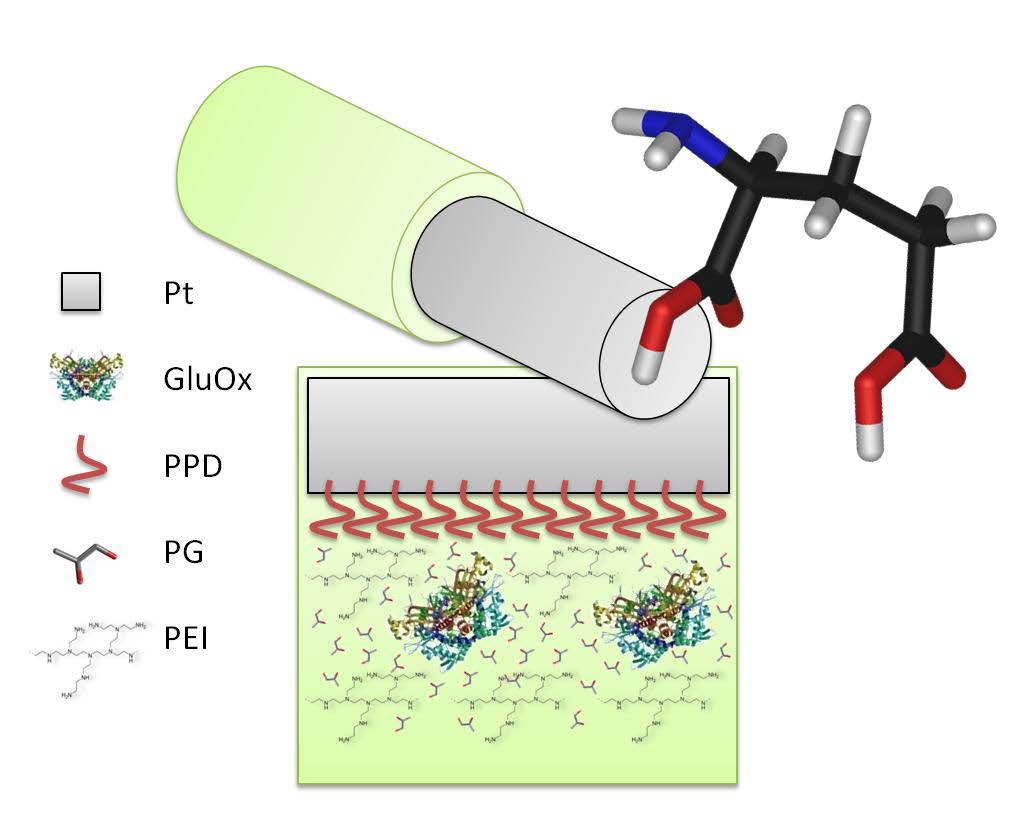L-glutamate is one the most important excitatory neurotransmitter at central nervous system level and it is implicated in several pathologies. So, it is very important to monitor its variations, in real time in animal models’ brain. Amperometric biosensors have been used because of their very high temporal and spatial resolution, and because suitable for a short to mid-term implantation. The present study aimed to develop and characterize a new glutamate biosensor design that exploits the selectivity of Glutamate Oxidase (GluOx) for l-glutamate, and the capability of a small molecule as propylene glycol (PG) to influence and extend the stability and the activity of enzyme. Different designs were evaluated by modifying the main components in their concentrations to find the most suitable design. Moreover, enzyme concentrations from 100 U/ml up to 200 U/ml were verified and different PG concentrations (1%, 0.1% and 0.05%) were tested. The most suitable selected design was Ptc/PPD/PEI(1%)2/GlutOx5/PG(0.1%) and it was compared to the same already described design loading PEDGE, instead of PG, in terms of over-time performances. PG has proved to be capable of determining an over-time stability of the glutamate biosensor in particular in terms of linear region slope (LRS) up to 21 days.

